Exploring the Grandeur of the Grand Canyon, Arizona A Natural Wonder of Epic Proportions
The Grand Canyon balances responsible visiting with conservation and preservation by using comprehensive measures. These efforts attempt to preserve the canyon's beauty, ecological diversity, and inherent value for future generations to enjoy.
11 Mins
157 Views
July 11, 2023
The Majestic Grand Canyon Arizona: A Spectacular Natural Wonder that Defies Imagination
First and foremost, Arizona’s Grand Canyon is a breathtaking natural wonder located in Arizona, United States has enchanted tourists for ages. Moreover, this enormous geological wonder is 277 miles (446 kilometers) long and is up to 18 miles (29 kilometers) wide. And descends more than a mile (1.6 km) and was sculpted over millions of years by the mighty Colorado River. The Grand Canyon offers a unique experience. That leaves tourists in awe of its sheer grandeur and unmatched beauty. Lastly, It is renowned for its breathtaking vistas, towering rocks, and bright colors.
Geological Formation of Grand Canyon Arizona
Firstly, the geological formation of the Grand Canyon. It is a fascinating story that spans millions of years. It is a testament to the powerful forces of erosion, uplift, and the persistent flow of the Colorado River. The formation of the Grand Canyon can be divided into several key stages.
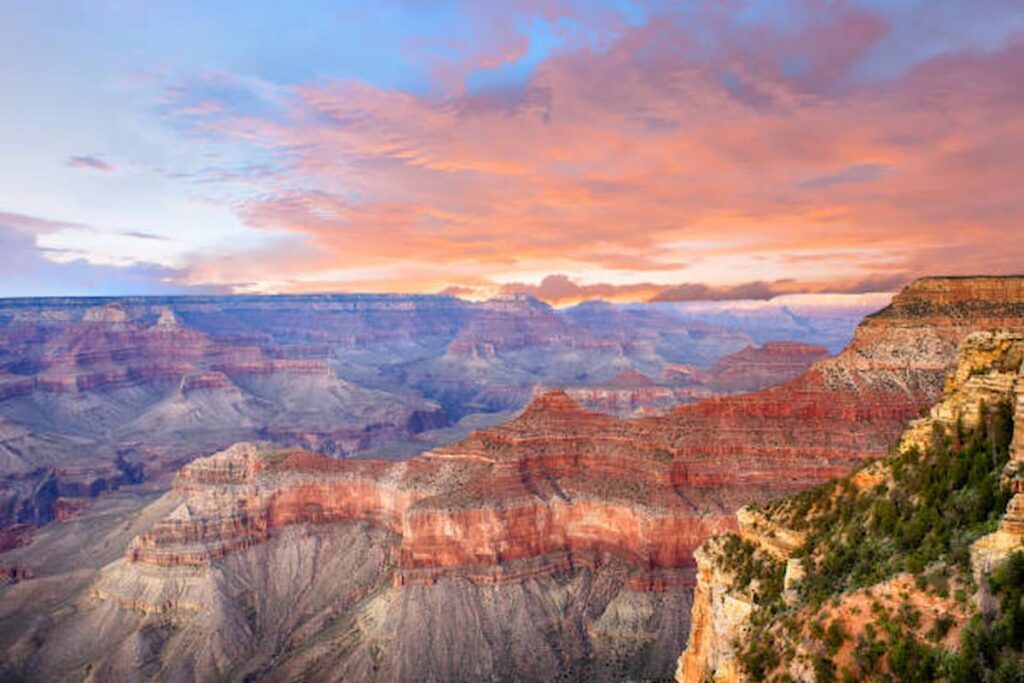
1-Pre-Canyon Era
The story begins around 1.7 billion years ago with the deposition of sedimentary rocks at the bottom of a shallow sea. Moreover, over time, layers of sandstone, limestone, and shale were deposited, forming the foundation for the future canyon.
2-Uplift and Erosion
Approximately 70 million years ago, a series of geological events shaped the region, including tectonic uplift. In addition, the Colorado Plateau, where the Grand Canyon is located, started rising due to plate tectonics and volcanic activity. Furthermore, this uplift exposed the rocks to the forces of erosion.
3-Colorado River Formation
Around 6 million years ago, the ancestral Colorado River began its relentless work of cutting through sedimentary rock layers. Moreover, as the river meandered and eroded the landscape, it gradually deepened its channel, carving through millions of years of accumulated sediment.
4-Formation of the Inner Gorge
Around 5 to 6 million years ago, the Colorado River began cutting more profoundly into the plateau, creating what is known as the Inner Gorge. Moreover, this phase of intense erosion continued as the river cut through progressively more complex rock layers, gradually sculpting the distinctive steep walls that we see today.
5-Different Rock Layers
The exposed rock layers in the Grand Canyon provide a stunning display of geological history. Moreover, They represent various periods, from ancient marine environments to desert dunes. The youngest rocks are found at the top, while the oldest rocks lie at the bottom of the canyon.
Key Rock Layers
- Kaibab Limestone: The topmost layer of the canyon, formed around 270 million years ago, represents an ancient sea deposit.
- Coconino Sandstone: This layer, formed around 275 million years ago, comprises windblown dunes and showcases well-preserved fossilized footprints of ancient reptiles.
- Redwall Limestone: Dating back around 340 million years, this layer is a prominent cliff-forming unit known for its distinctive reddish hue.
- Bright Angel Shale: This layer, composed of soft shale, dates back around 525 million years and erodes more easily than the layers above and below.
- Vishnu Schist: The oldest exposed rock layer in the canyon, around 1.7 billion years old, represents ancient crystalline basement rocks that have been metamorphosed.
6-Ongoing Erosion
The formation of the Grand Canyon is an ongoing process. The Colorado River erodes the canyon, widening it and shaping its features. Flash floods, freeze-thaw cycles, and the occasional landslides contribute to the continuous evolution of the canyon’s landscape.
The geological formation of the Grand Canyon is a complex and dynamic story that showcases the immense power of natural processes over vast timescales. It serves as a living testament to the Earth’s ever-changing geology and offers visitors a unique opportunity to witness the beauty and grandeur of this geological masterpiece.

7-South Rim and North Rim of Grand Canyon Arizona
The Grand Canyon, one of the world’s most renowned natural wonders, is divided into two primary sections: the South and North Rim. Each rim offers a unique experience and showcases the canyon’s grandeur from different perspectives. Let’s explore the characteristics of both rims.
8-South Rim of Grand Canyon
The South Rim is the more popular and accessible section of the Grand Canyon, attracting most visitors. Here are some key features of the South Rim:
- Accessibility: The South Rim is open year-round and easily reachable by car from major cities like Phoenix, Arizona, and Las Vegas, Nevada. It is well-served by transportation options, including shuttles and tours.
- Breathtaking Views: The South Rim provides a multitude of panoramic viewpoints that offer stunning vistas of the canyon’s vastness. Popular spots include Mather Point, Yavapai Point, and Desert View. These overlooks provide awe-inspiring perspectives of the deep chasms, towering cliffs, and vibrant rock layers.
- Hiking Trails: The South Rim offers a variety of hiking trails suitable for all skill levels. The Bright Angel Trail, one of the most famous trails in the park, descends into the canyon and offers breathtaking views along its path. The South Kaibab Trail, known for its steep descent, and the Rim Trail, which follows the rim for several miles, are popular options.
- Visitor Services: The South Rim has a range of visitor services, including accommodations, campgrounds, restaurants, gift shops, and visitor centers. The Grand Canyon Visitor Center near Mather Point is a hub for information, exhibits, and educational programs.
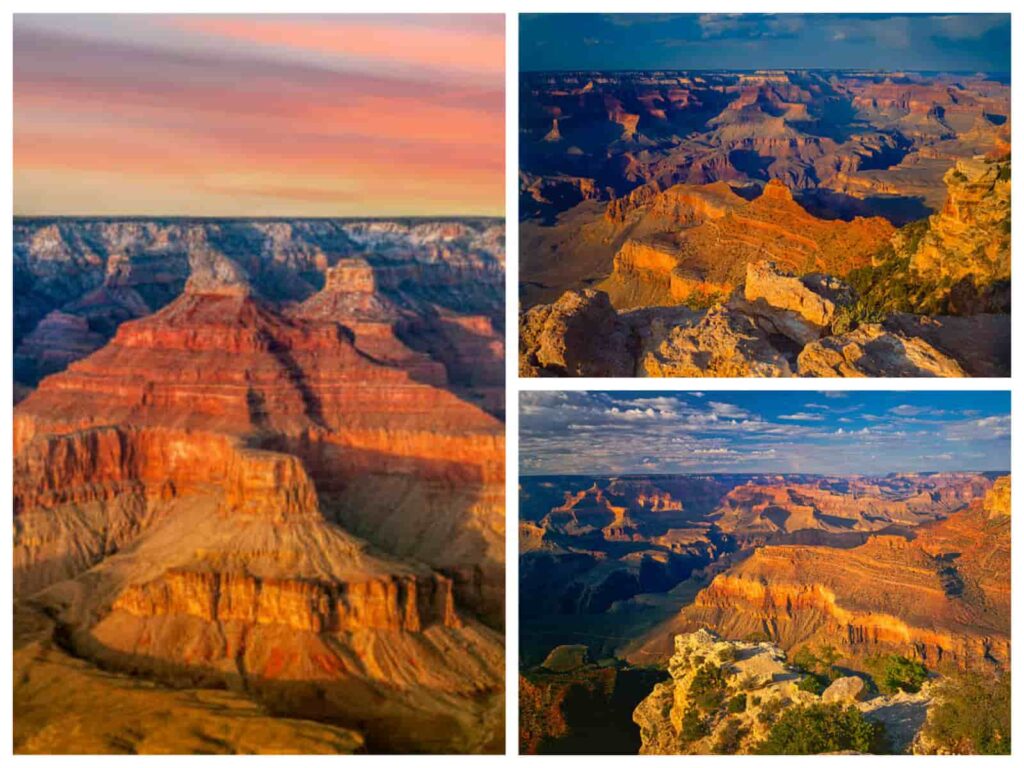
9-North Rim Grand Canyon
The North Rim provides a more secluded and serene experience, with fewer visitors than the bustling South Rim. Here are some key features of the North Rim
- Remote Location: The North Rim is in a more remote and less accessible park area. It is approximately a 4.5-hour drive from the South Rim, and the road leading to the North Rim is closed during winter due to heavy snowfall.
- Tranquil Atmosphere: The North Rim offers a more tranquil and peaceful ambiance, ideal for those seeking a quieter experience. The viewpoints, such as Point Imperial and Bright Angel Point, provide stunning vistas with fewer crowds.
- Hiking Trails: The North Rim offers several hiking trails that showcase the area’s unique beauty. The North Kaibab Trail is famous, leading hikers to the Colorado River and offering incredible views. The Transept Trail and the Widforss Trail are other options for exploring the North Rim’s scenic wonders.
- Lodging and Services: The North Rim has fewer accommodation options than the South Rim, with a single lodge and a limited number of campgrounds. The Grand Canyon Lodge provides lodging, dining, and visitor services for those exploring the North Rim.
It’s important to note that the North Rim is typically open from mid-May to mid-October, with the exact dates depending on weather conditions. The South Rim, being more accessible and accommodating, attracts most visitors throughout the year. Whether you choose the bustling South Rim or the tranquil North Rim, both sections of the Grand Canyon offer remarkable beauty and an opportunity to immerse yourself in the awe-inspiring grandeur of this natural wonder.
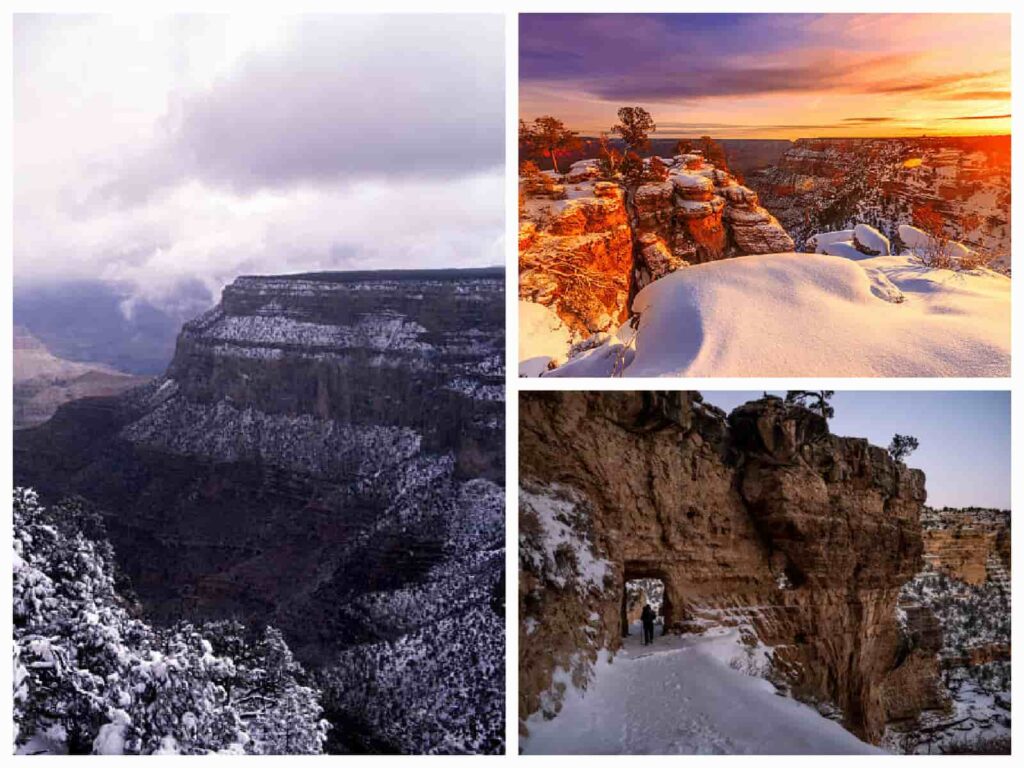
Activities and Attractions of Grand Canyon Important Travel Info, Tips, and Travel Guide
The Grand Canyon offers various activities and attractions that cater to various interests and preferences. Here are some of the most popular things to do at the Grand Canyon:
1-Hiking
The Grand Canyon boasts numerous hiking trails that cater to different skill levels. From short walks along the rim to challenging multi-day backpacking adventures, there is something for everyone. Some popular hiking trails include the Bright Angel Trail, South Kaibab Trail, North Kaibab Trail, and Rim-to-Rim Trail.
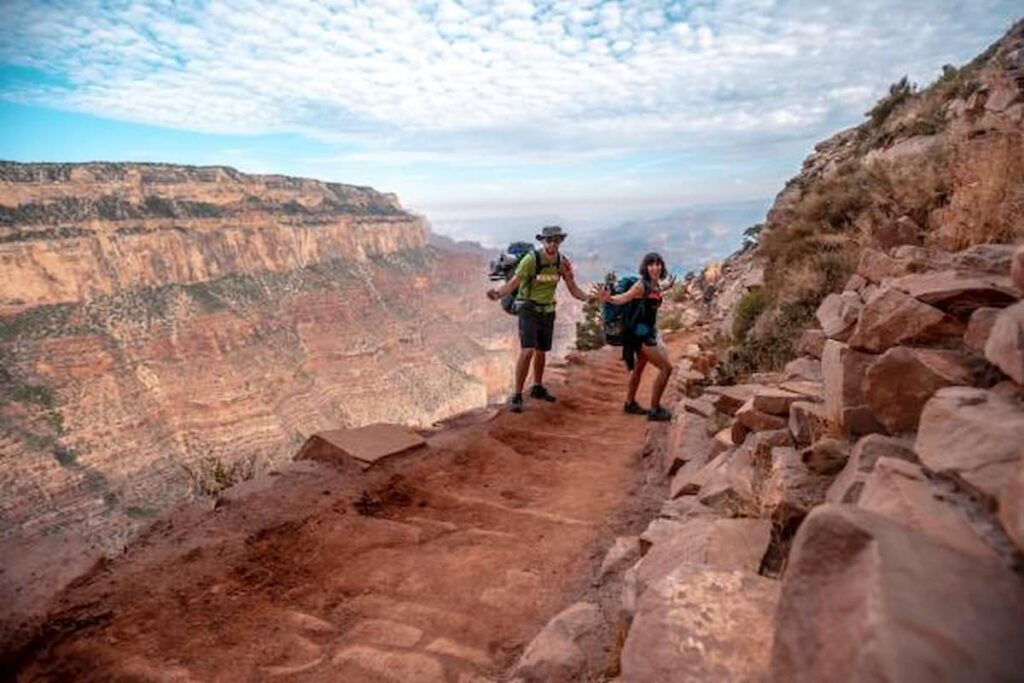
2-Rim Walks
If you prefer a less strenuous experience, you can stroll along the rim of the Grand Canyon. The Rim Trail offers paved paths and scenic viewpoints, allowing you to soak in the breathtaking vistas without venturing into the canyon.
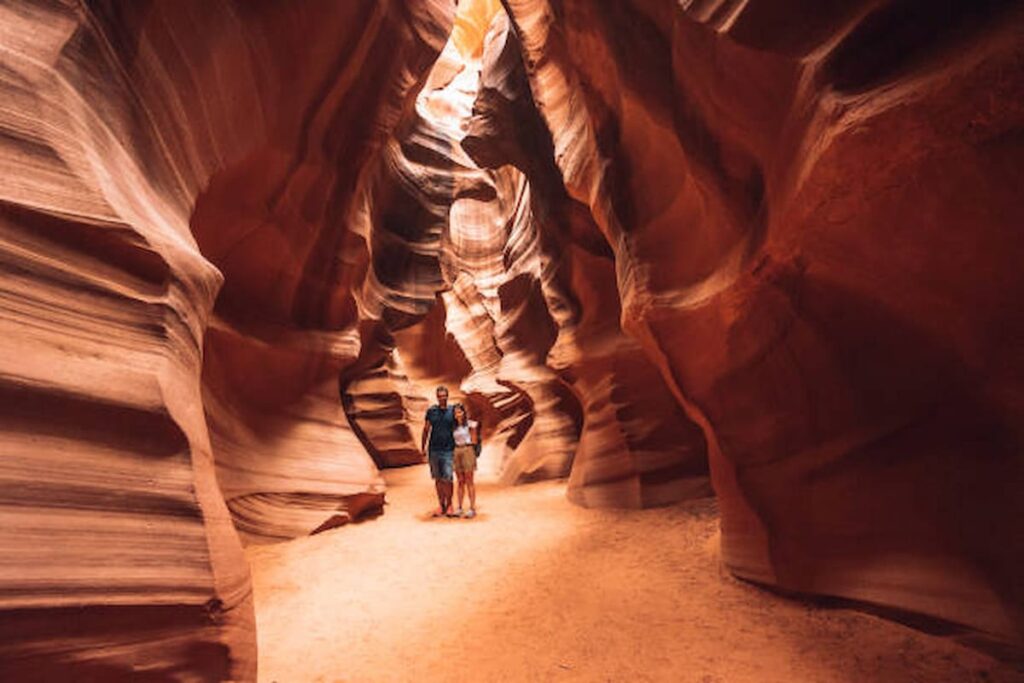
3-Mule Rides
For a unique and memorable experience, consider taking a mule ride into the Grand Canyon. Guided tours on surefooted mules offer an alternative way to explore the canyon’s depths and provide an opportunity to learn about the area’s history and geology from knowledgeable guides.
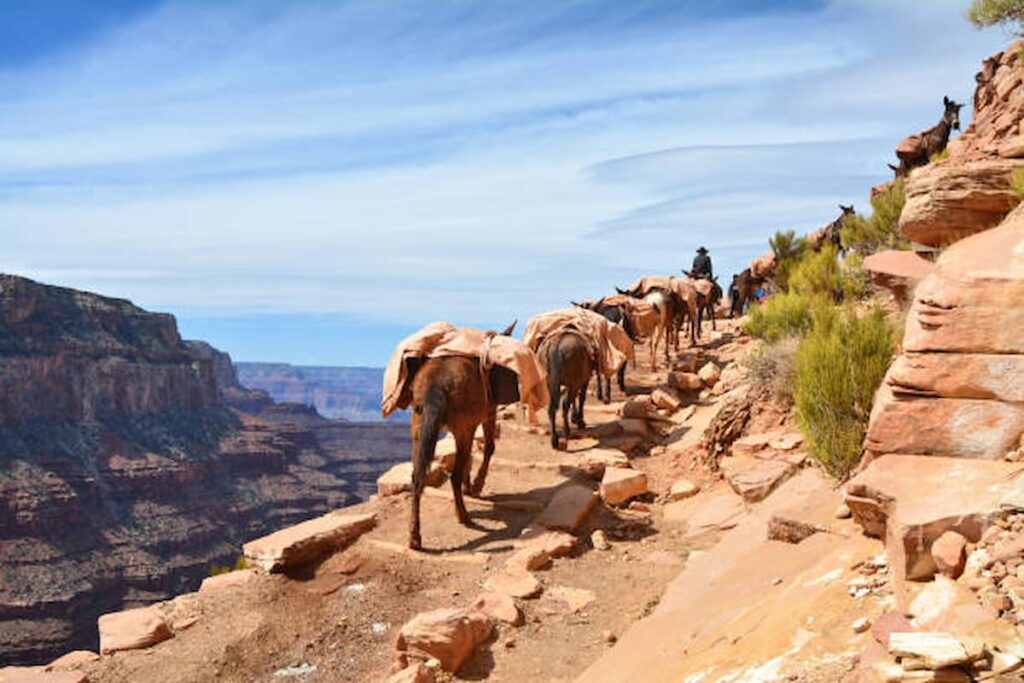
4-Rafting
Embarking on a rafting trip down the Colorado River is an exhilarating adventure that allows you to experience the Grand Canyon from an entirely different perspective. Whether you opt for a guided white-water rafting tour or a leisurely float trip, rafting provides an unforgettable journey through the canyon’s depths. It offers opportunities for camping along the riverbanks.
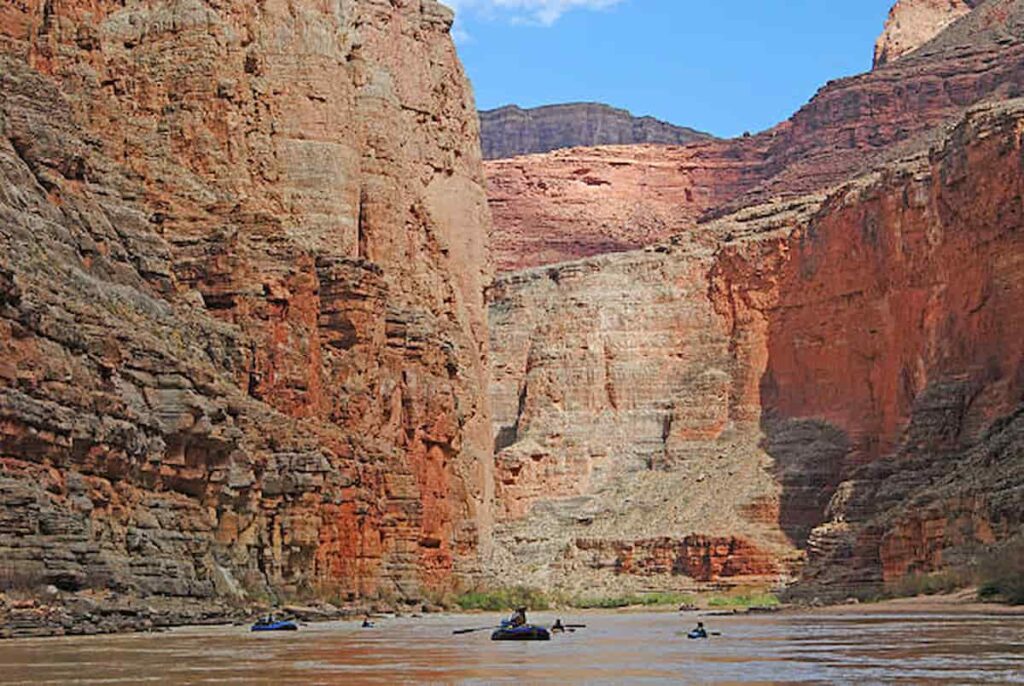
5-Helicopter Tours
Taking a helicopter tour is an excellent way to appreciate the vastness and scale of the Grand Canyon. These aerial tours provide breathtaking views of the canyon’s majestic cliffs, the winding Colorado River, and hidden waterfalls. Helicopter tours are typically available from nearby towns like Tusayan and Las Vegas.
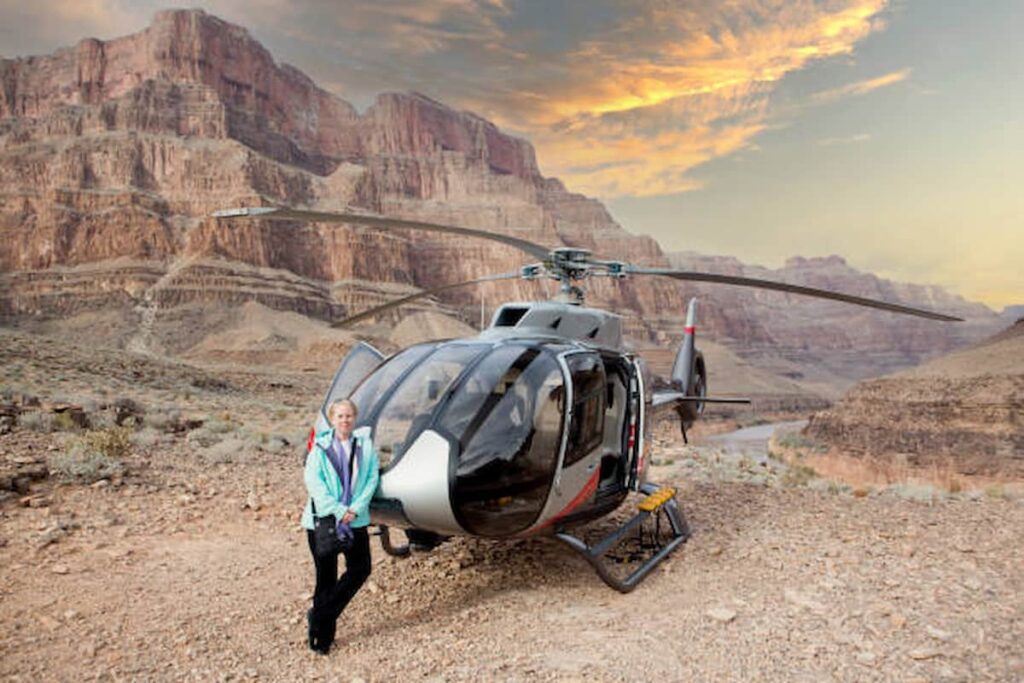
6-Photography
The Grand Canyon presents endless opportunities for photography enthusiasts. Capture the dramatic play of light and shadow on the canyon walls, the vibrant colors of the rock layers, and the breathtaking panoramas. Sunrise and sunset are particularly magical times for capturing stunning photographs.
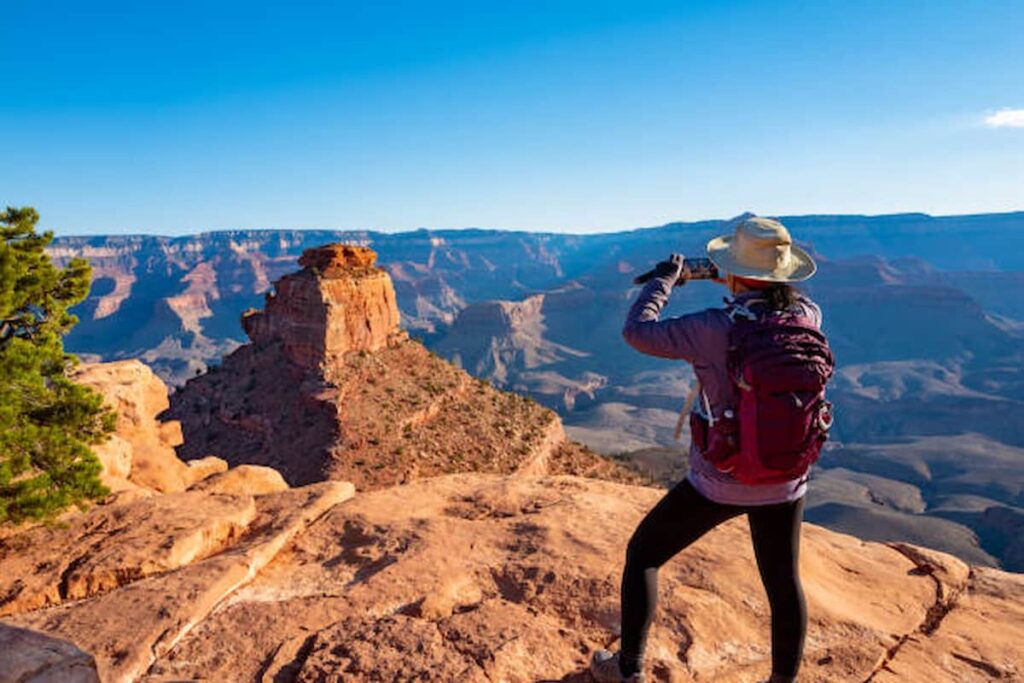
7-Ranger Programs and Interpretive Talks
Grand Canyon National Park offers a range of ranger-led programs and interpretive talks that provide insights into the park’s natural and cultural history. These programs cover various topics, including geology, wildlife, Native American culture, and astronomy. Attending these programs can enhance your understanding and appreciation of the Grand Canyon.
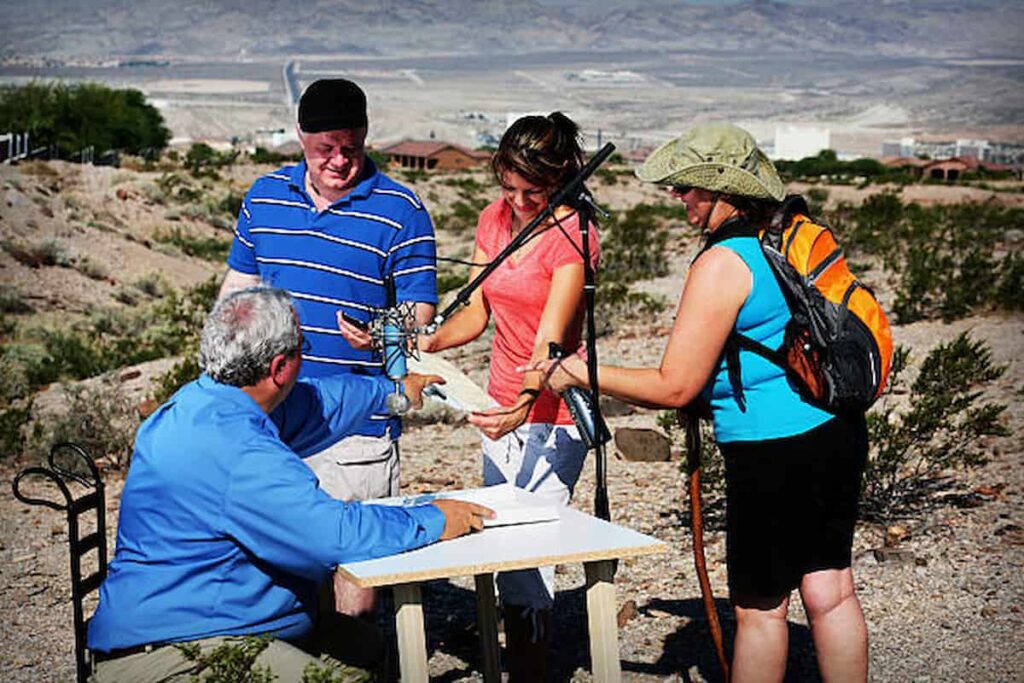
8-Visitor Centers and Museums
Explore the visitor centers and museums within the park to learn more about the Grand Canyon’s geology, history, and ecology. The Grand Canyon Visitor Center, Yavapai Geology Museum, and Tusayan Museum are among the educational hubs that provide exhibits, interactive displays, and informative resources.
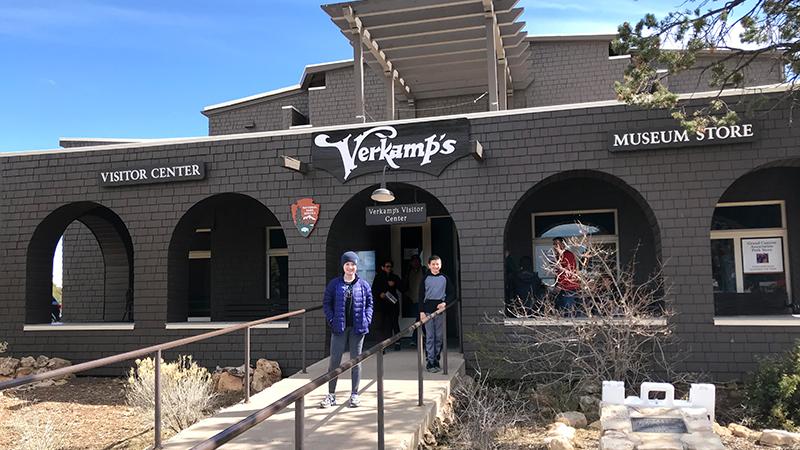
9-Camping and Lodging
Spend the night under the stars by camping in the Grand Canyon National Park. There are several campgrounds available, but reservations are a must. If camping isn’t your preference, the park also offers lodges, cabins, and hotels near the rim, providing convenient accommodation options.
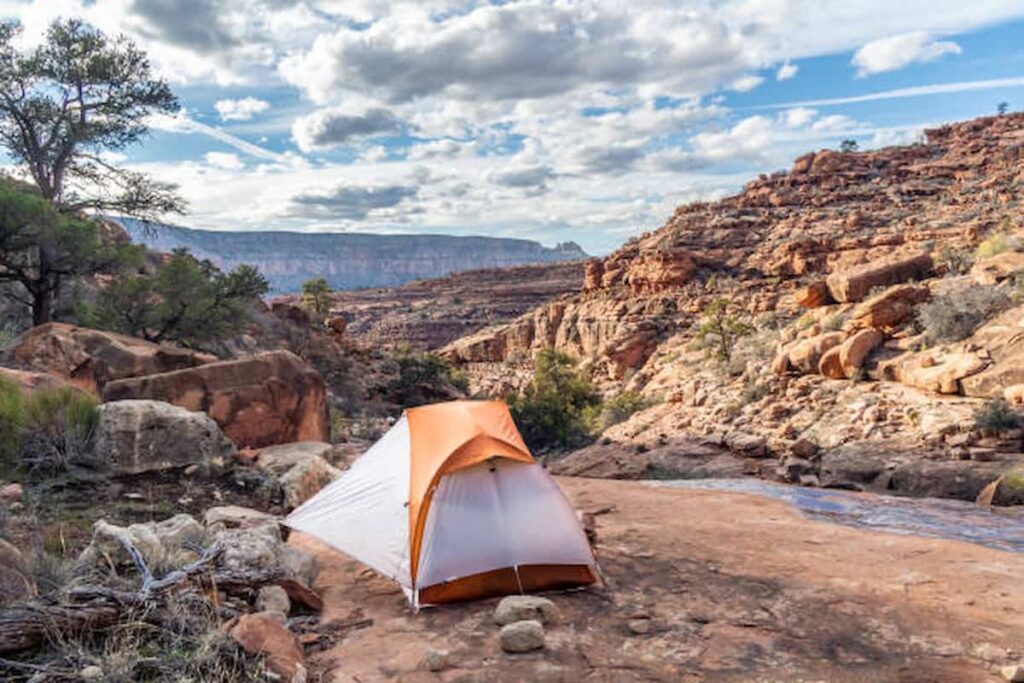
10-Wildlife Viewing
The Grand Canyon is home to a diverse range of wildlife. Watch for elk, mule deer, California condors, squirrels, and various bird species as you explore the park. Binoculars and a keen eye will enhance your chances of spotting these magnificent creatures.
These activities and attractions offer a glimpse into the grandeur and splendor of the Grand Canyon. Remember to plan, consider your fitness level and safety precautions, and make the most of your visit to this extraordinary natural wonder.
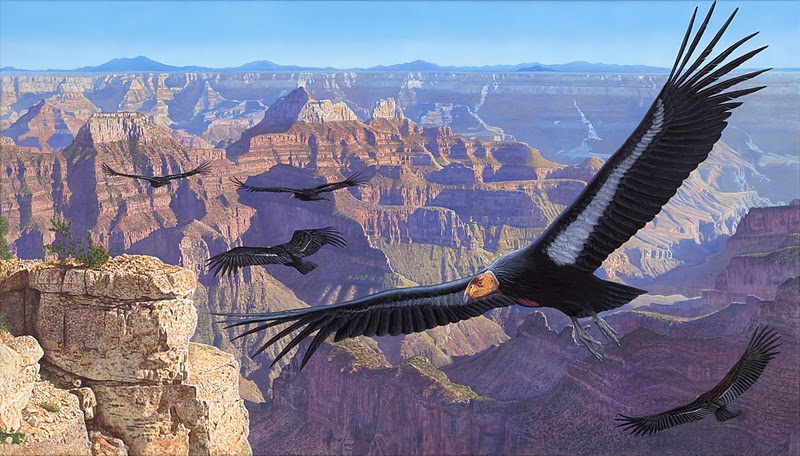
Conservation and Preservation of the Canyon Arizona
Conservation and preservation are essential to protecting the Grand Canyon, ensuring its natural beauty and ecological integrity for future generations. Here are some key points regarding the conservation and preservation efforts in place for the Grand Canyon
1-Grand Canyon National Park
The Grand Canyon is encompassed by Grand Canyon National Park, established in 1919. Moreover, the park serves as a protected area dedicated to preserving the canyon’s unique geology, ecosystems, and cultural heritage. Lastly, it covers approximately 1.2 million acres of land.
2-UNESCO World Heritage Site
UNESCO sees the Grand Canyon as a World Heritage Site, highlighting its universal value and importance to humanity. This designation emphasizes the need for international cooperation in preserving and conserving the site.
3-Park Management
The National Park Service (NPS) manages the Grand Canyon National Park and plays a vital role in its conservation efforts. Moreover, the NPS implements strategies to protect the park’s resources, control visitor impacts, and maintain ecological balance while providing opportunities for enjoyment and education.
4-Natural Resource Conservation
Preserving the Grand Canyon’s diverse ecosystems is a primary focus. The park works to safeguard its plant and animal species, protect habitats, and manage natural resources sustainably. Moreover, efforts are made to prevent the introduction of invasive species and restore native plant communities.
5-Cultural Resource Preservation
The Grand Canyon is also rich in cultural history, with archaeological sites and artefacts dating back thousands of years. Preserving these cultural resources is integral to understanding and appreciating the human history associated with the canyon. Furthermore, the NPS works to document, protect, and interpret archaeological sites, traditional cultural properties, and historic structures.
6-Visitor Education and Outreach
Educating visitors about conservation and responsible behaviour is crucial. The park provides interpretive programs, exhibits, and guided tours, emphasising the significance of preserving the Grand Canyon’s natural and cultural resources. Moreover, visitors are encouraged to follow Leave No Trace principles and respect wildlife.
7-Research and Monitoring
First and foremost, ongoing scientific research and monitoring programs. Help assess the health of the Grand Canyon’s ecosystems and guide conservation efforts. These studies focus on various aspects, including water quality, air pollution, wildlife populations, and geological processes. Lastly, the knowledge gained through research enhances understanding and aids in developing effective conservation strategies.
8-Collaboration and Partnerships
Collaboration among governmental agencies, nonprofit organizations, groups, and local communities is vital in protecting the Grand Canyon. Cooperative efforts aim to address conservation challenges, share resources, and foster sustainable practices. Partnerships between the NPS, groups, and other stakeholders help integrate traditional ecological knowledge and cultural perspectives into management plans.
9-Sustainable Tourism Practices
Managing tourism is crucial for minimizing the impact on the Grand Canyon’s fragile ecosystems and preserving its natural beauty. Efforts are made to promote sustainable tourism practices, including limiting visitor numbers, implementing transportation systems that reduce congestion and emissions, and providing educational materials to promote responsible behavior.
The Grand Canyon balances responsible visiting with conservation and preservation using comprehensive measures. These efforts attempt to preserve the canyon’s beauty, ecological diversity, and inherent value for future generations.
Conclusion
Visiting the Grand Canyon is a humbling and transformative experience showcasing nature’s remarkable power. Its colossal dimensions, breathtaking panoramas, and rich geological history make it one of the world’s most iconic destinations. Whether hiking along the rim, descending into the canyon’s depths, or marveling at its grandeur from above, the Grand Canyon offers an unparalleled journey through time and a profound appreciation for the natural wonders that shape our planet.
In the United States, the Colorado River in northern Arizona carved out the Grand Canyon. Lake Powell and the town of Page at the Utah–Arizona border mark the beginning of the Grand Canyon's northeastern terminus.
Northwestern Arizona's Grand Canyon National Park is the nation's fifteenth location to be designated as a national park. The Grand Canyon, a gorge of the Colorado River that is sometimes referred to as one of the Seven Wonders of the World, is the park's primary attraction.
The Grand Canyon is formed today by erosion caused by the Colorado River and geological action. With its huge fossil records, a plethora of natural characteristics, and rich archaeological past, it is one of the most researched landscapes in the entire world.
March through May and September through November are the greatest months to visit the Grand Canyon because the days are cool and there aren't as many people around. Summer is the park's busiest season, so if you want to go, be ready to encounter large crowds of visitors and scarce hotel options.
Phoenix and Las Vegas are the two significant cities near the Canyon. Even though Flagstaff, Arizona, is a smaller city, it has an international airport and is only 1.5 hours from the South Rim. The town with the smallest public airport, Tusayan, is closest to Grand Canyon Village.
A crucial element in the eventual construction of the Grand Canyon was the uplift of the Colorado Plateau. The Colorado River could cut through a plateau made possible by plate tectonics lifting the rocks high and flat.
In the American state of Arizona, the Grand Canyon results from tectonic uplift. As the Colorado River descends across the Colorado Plateau, it has been shaped over millions of years. Between 5 and 70 million years have passed since the Grand Canyon was formed.
The geologic history of Arizona began at roughly 1.7 Ga (billion years ago) when a series of volcanic island arcs resembling the Hawaiian islands started crashing into the Laurentia portion of the North American craton, which is the core of ancient North America.
The southwestern part of the United States is home to the landlocked state of Arizona. Its broad and varied geography is renowned for its deep gorges, deserts at high and low altitudes, various natural rock formations, and volcanic mountain ranges.
The South Rim is the best place for first-time Grand Canyon visitors because it is home to several of the most iconic viewpoints.
